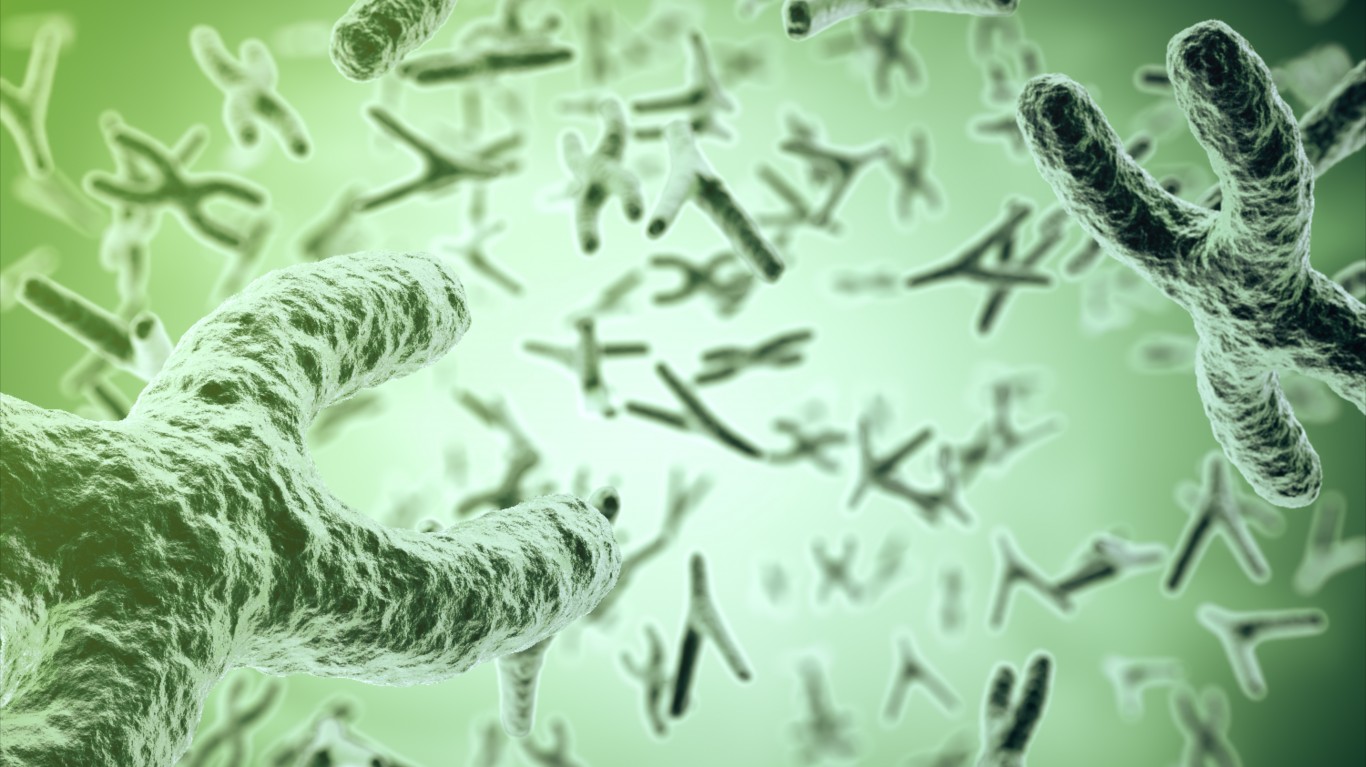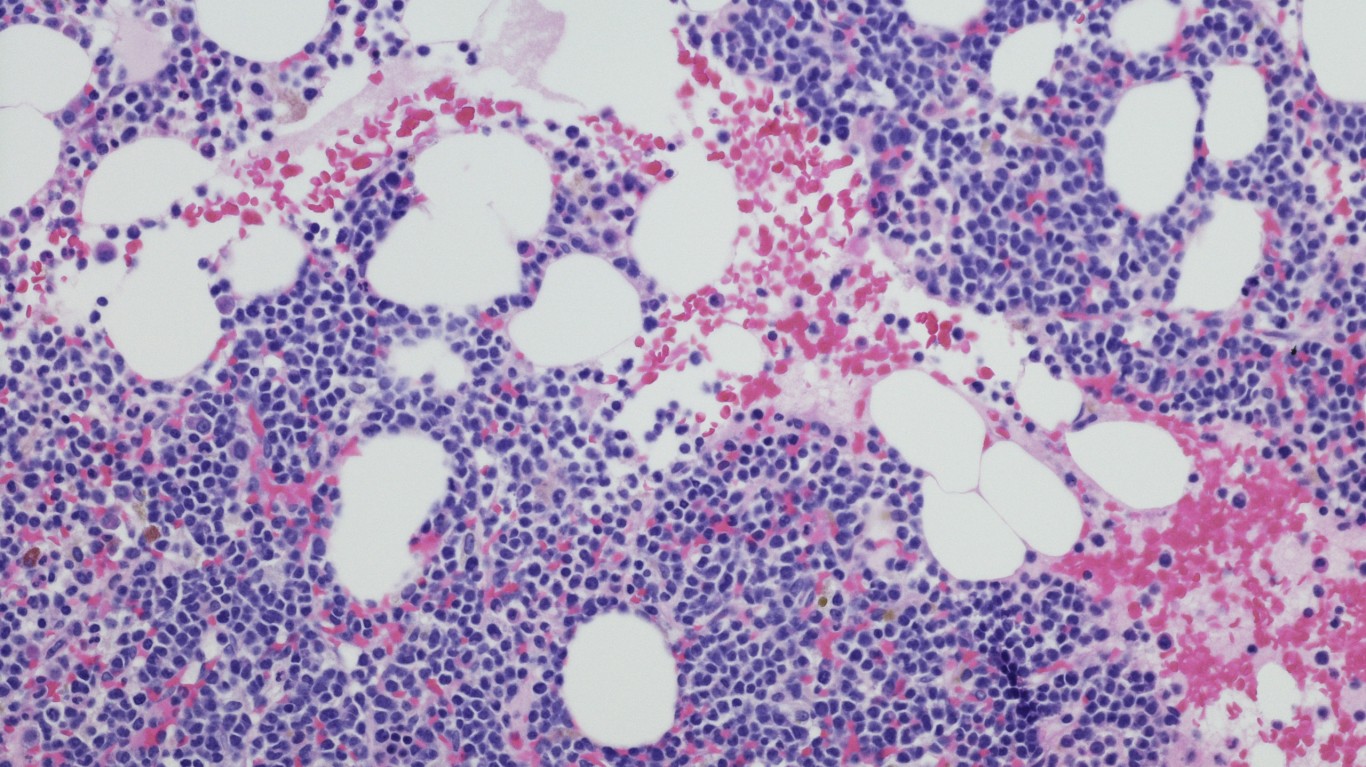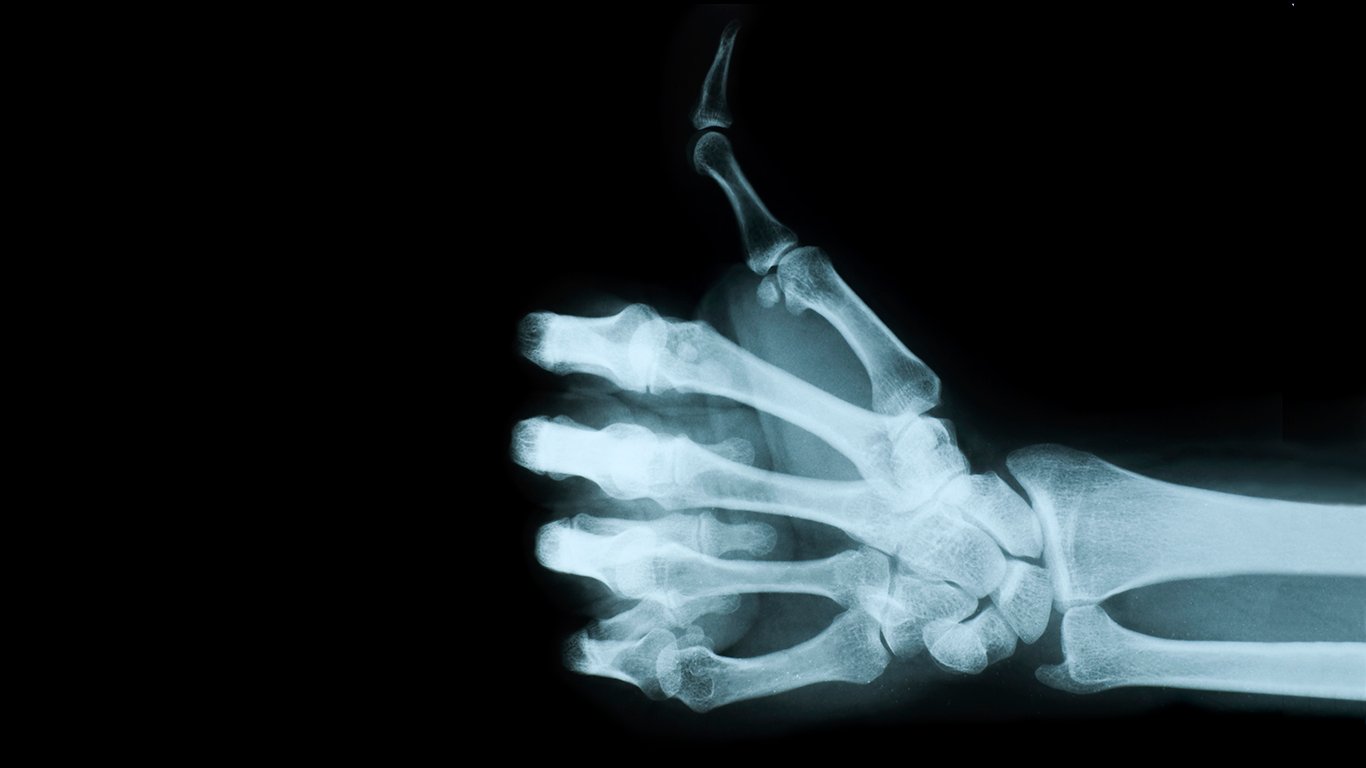

People can’t see the different components in the blood that keep the body healthy. But these components — mainly white and red blood cells, plasma, and platelets — can all become malignant for various reasons.
Those susceptible to certain diseases will not necessarily be diagnosed, and some patients develop cancer with no known risk factors. Cancer can develop in people of all ages, but some are more common in younger or older individuals or in those who lead a certain lifestyle. 24/7 Tempo compiled a list of common risk for blood cancers factors using information from sources such as the American Cancer Society, National Cancer Institute, and the Centers for Disease Control and Prevention.
Cancer, in general, is a health condition in which abnormal cells divide uncontrollably, infiltrating and destroying normal body tissue. It is the second leading cause of death in the United States. In 2016 alone, the disease killed nearly 600,000 people, according to the CDC.
More than 100 different types of cancer are known to exist. About a dozen of them are blood cancers that affect the production and function of blood cells and bone marrow, and they fall into three main categories: leukemia, lymphoma (non-Hodgkin and Hodgkin), and myeloma.
A person in the United States is diagnosed with blood cancer every three minutes. An estimated total of more than 1,760,000 new cases are projected to be diagnosed in 2019, or about 10% of all new cancer cases this year, according to the Leukemia and Lymphoma Society. Someone in the country dies from a form of blood cancer every nine minutes. An estimated 56,770 people will die from the disease in 2019, accounting for 9.4% of all cancer deaths.
While overall cancer death rates have been declining for years, new diagnoses are expected to continue to rise largely due to the ongoing growth and aging of the U.S. population. And the numbers vary greatly from one region to another, often due to unhealthy lifestyle choices — these are the states with the highest and lowest cancer rates.
Click here to learn about 21 common and controversial blood cancer risk factors.
To compile a list of factors that increase the risk of developing blood cancers, 24/7 Tempo reviewed information on hematologic malignancies from sources such as the American Cancer Society, Leukemia and Lymphoma Society, National Cancer Institute, Cancer Treatment Centers of America, and other sources.

1. Age
While aging is the single biggest risk factor for all cancers, certain blood cancers are common among children. Childhood cancers usually develop from gene changes taking place very early in life, sometimes even before birth, according to the American Cancer Society. Childhood cancers are not strongly linked to lifestyle or environmental risk factors.
Acute lymphocytic leukemia (AML), which is a cancer of the blood and bone marrow, is the most common type among children 3- to 5-years old. Childhood leukemia accounts for nearly a third of all cancers in children. Chronic lymphocytic leukemia (CLL), which also starts in the bone marrow but grows slower, is the most common type of leukemia in adults.
[in-text-ad]

2. Being male
Blood cancers are more common in men than in women, according to Yale Medicine. About 23,000 people are expected to die from leukemia in 2019 — 13,150 males and 9,690 females, according to the Leukemia and Lymphoma Society.
Around 32,000 new cases of myeloma, a cancer of plasma cells, are expected to be diagnosed in the United States alone this year, 18,000 of which among males.
Non-Hodgkin lymphoma, which accounts for about 4% of all cancers in the United States, is also more common among men. The chance that a man will develop NHL in his lifetime is one in 42; for a woman, it’s one in 54, according to the American Cancer Society.

3. Being female
The types of blood cancers that are slightly more prevalent in females are myeloproliferative neoplasms, or MPNs, which develops when the body makes too many white or red blood cells. About 24,000 cases were diagnosed in males and about 24,500 cases were diagnosed in females, between 2011 and 2015, according to the LLS.

4. Chemotherapy
Chemotherapy drugs are linked with causing certain second cancers — new cancers arising in cancer survivors — but doctors and researchers don’t know exactly why. The higher the dose and the longer the treatment, the higher the risk of a new cancer occurring.
The cancers most often associated with chemo are myelodysplastic syndrome (MDS), a disorder caused by the disruption of blood cells production, and AML. Sometimes, MDS occurs first, then turns into AML, according to the American Cancer Society. Another type of leukemia, acute lymphocytic leukemia (ALL), has been linked to chemotherapy as well. Chemo treatment for testicular cancer specifically has been linked to the development of second cancers.
[in-text-ad-2]

5. Targeted therapy drugs
Targeted therapy drugs, also called precision medicine, are designed to block the growth or spread of cancer by acting on genes or proteins involved in the growth, progression, and spread of the disease. Vemurafenib (Zelboraf) and dabrafenib (Tafinlar) are drugs that target the BRAF protein, which plays a role in controlling cell functions.

6. Down syndrome
Most leukemias are not linked directly to any known genetic causes, but some genetic factors may increase the risk of childhood leukemia, according to the American Cancer Society. Children with Down syndrome have an extra copy of chromosome 21, the smallest human chromosome. Kids with the condition are significantly more likely to develop ALL or AML than are other children, whose overall risk is about 3%.
Down syndrome has also been linked to transient leukemia, also referred to as transient myeloproliferative disorder. It is a leukemia-like condition infants develop in their first month of life. It often resolves on its own.
[in-text-ad]

7. Other genetic disorders
Some inherited conditions, such as Fanconi anemia (decreased production of blood cells), Bloom syndrome (a disorder characterized by small stature and sensitivity to sunlight, ataxia-telangiectasia (difficulty coordinating movements), and Blackfan-Diamond syndrome (bone marrow failure syndrome) seem to raise the risk of AML, according to Cancer Treatment Centers of America.
Li-Fraumeni syndrome, caused by a mutation that prevents genes from functioning correctly, significantly increases the risk of developing several kinds of cancer, including leukemia, bone or soft tissue sarcomas, breast cancer, adrenal gland cancer, and brain tumors.

8. Chromosome 21 abnormality
A rearrangement, or a mutation, of chromosome 21, has been linked to a type of blood cancer known as core binding factor acute myeloid leukemia (CBF-AML). About 7% of adults with this kind of cancer have this mutation. The change fuses part of a gene from chromosome 21 with part of a gene from chromosome 8. This type of mutation is not inherited, and how it arises is not fully understood.

9. Smoking
Smoking has been linked to cancer for decades. It significantly increases the risk of developing certain cancers, especially lung cancer, by damaging the cells DNA and by weakening the immune system so it’s unable to kill cancer cells or stop them from growing. Among all the blood cancers, smoking has been linked to an increased risk of developing AML.
[in-text-ad-2]

10. Exposure to chemicals
Long-term exposure to benzene and some petrochemicals is considered to be a risk for developing leukemia, according to Cancer Treatment Centers of America. Benzene is often used in plastics, lubricants, rubbers, dyes, and detergents. People can be exposed to it by breathing it in the air, from cigarette smoking, or by absorbing it through the skin.

11. Family history
Family history can only tell so much about the likelihood of being diagnosed with cancer. The occurrence of cancer in a family is not a death sentence, just as the absence of cancer in a family is no guarantee one family member won’t be diagnosed eventually. People in the same family may get cancer because they have similar lifestyles and behaviors that raise the risk of the disease.
[in-text-ad]

12. Radiation
Radiation is everywhere, and the word often scares people. But lower-energy, non-ionizing forms of radiation, such as radiation from cell phones, have not been found to cause cancer in people, according to the National Cancer Institute. However, high-energy radiation, such as gamma rays, alpha particles, beta particles, and neutrons, can damage DNA and cause cancer. X-rays and other medical procedures, such as CT scans, also release radiation that can technically lead to cancer, but the risk is very small. High doses of ionizing radiation may damage organs and cause blood diseases, according to the Cancer Treatment Centers of America.

13. Blood disorders
Certain blood disorders, including chronic myeloproliferative disorders (MPDs) — slow-growing blood cancers where the bone marrow makes too many abnormal cells that accumulate in the blood — increase the chances of developing AML, according to Cancer Treatment Centers of America. While MPDs are difficult to diagnose — because the symptoms develop later and are too general — they are fairly rare and have no clear cause.

14. Pesticides
There is initial evidence to suggest that exposure to pesticides before or after birth may increase the risk of childhood leukemia, but more research needs to be done to prove a conclusive connection. Some studies, specifically on non-Hodgkin lymphoma and leukemia, show associations with pesticide exposure. Pesticides may induce an imbalance between free radicals and antioxidants in the body, which can lead to DNA cell damage and chromosomal mutations that can trigger infant, but not childhood, leukemia.
[in-text-ad-2]

15. Living near high-voltage power lines
Prolonged exposure to electromagnetic fields, including living near power lines, may increase the risk of developing ALL. A 2005 British study conducted by Oxford University found a 69% higher risk of leukemia in children who lived within 650 feet of high-voltage power lines compared to children who lived farther away. No evidence was found to support a causal connection between power lines and blood cancer.
A 2016 study published in the British Journal of Cancer conducted in California found a “slightly” higher risk of developing childhood leukemia in kids living within 50 miles of transmission lines with voltage higher than 200kV.

16. Race and ethnicity
Analysis of cancer diagnoses over the years show “significant racial/ethnic disparities in incidence and survival for patients diagnosed with hematologic malignancies,” according to the American Society of Hematology. However, the reason for the differences is not well understood.
Data for AML covering the period from 2010 to 2014 suggests that white people are most likely to develop the disease (4.3 cases per 100, 000 persons), Hispanics are next (3.6 per 100,000), then black people (3.5), and Asian/Pacific Islanders (3.4).
Data from 1999 to 2008 on survival disparities show that the probability of death for black and Hispanic patients with ALL was about 45% and 46% higher, respectively, than for white patients.
As for multiple myeloma, it is one of the most commonly diagnosed hematologic malignancies among black Americans.
Significant racial differences are noted among patients with NHL. Non-Hispanic whites have the highest incidence of CLL.
[in-text-ad]

17. Obesity
Being overweight or obese may increase the risk of NHL and multiple myeloma, according to the American Cancer Society. However, research has not been conclusive as to why there may be a link. While the reasons are not well understood, some theories include that excess body fat may hinder proper cell growth and the levels of some hormones.

18. Plasma cell
Plasma cell diseases are characterized by the presence of abnormal clone of plasma cells. These disorders can be benign or malignant. The abnormal plasma cells may keep the bone marrow from making enough healthy stem cells that eventually grow to become red or white blood cells or platelets that could fight cancer.

19. Certain viruses
The immune system fights a huge number of viruses on a regular basis. Some, however, make it past the body’s first line of defense and cause serious problems. A herpes virus may cause Kaposi sarcoma, which is a cancer of the blood vessels, and two types of lymphoma. Human T-Cell Lymphotropic Virus Type 1, a lifelong condition with no treatment, can cause leukemia and lymphoma. The Epstein-Barr virus (EBV), also a virus with no treatment or vaccine, can cause blood cancer in adults and children by switching genes involved in cancer development on and off, according to 2016 research by University of Sussex.
Some research has linked long-term hepatitis C virus infection with non-Hodgkin lymphoma, according to the American Cancer Society.
HIV virus has not been proven to cause blood cancer directly. However, it destroys white blood cells and weakens the body’s immune system, which may lead to other viruses, such as HPV, that might cause cancer. HIV has been linked to a higher risk of Kaposi sarcoma and cervical cancer and NHL.
[in-text-ad-2]

20. Hair dyes
The science is conflicting. Personal hair dyes are not classified as carcinogens. However, there is some evidence linking the use of hair dyes with increased risks of certain cancers of the blood and bone marrow, such as NHL and leukemia, according to the National Cancer Institute. There are also studies, though, that have shown no such links.

21. Workplace
The workplace is listed by the American Cancer Society as uncertain, unproven, or controversial risk factor for developing ALL. But if your job location exposes you to diesel, gasoline, pesticides, and possible carcinogenic chemicals for a long period of time, you may be at higher risk of ALL. Research investigating a direct link between this type of cancer and the workplace is still being conducted.
Sponsored: Attention Savvy Investors: Speak to 3 Financial Experts – FREE
Ever wanted an extra set of eyes on an investment you’re considering? Now you can speak with up to 3 financial experts in your area for FREE. By simply
clicking here you can begin to match with financial professionals who can help guide you through the financial decisions you’re making. And the best part? The first conversation with them is free.
Click here to match with up to 3 financial pros who would be excited to help you make financial decisions.
Thank you for reading! Have some feedback for us?
Contact the 24/7 Wall St. editorial team.
 24/7 Wall St.
24/7 Wall St.

